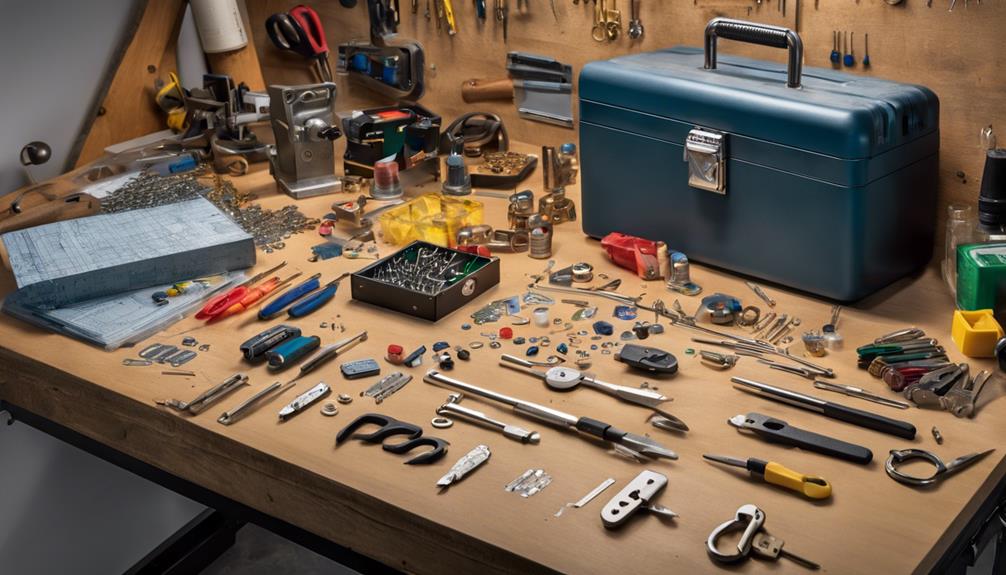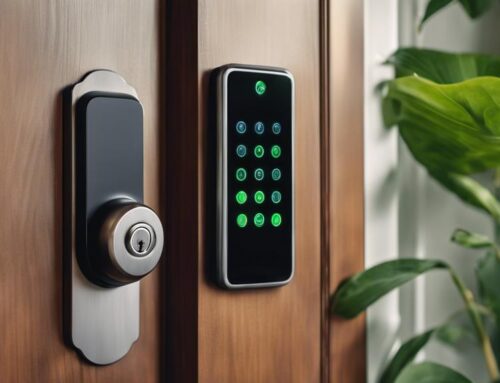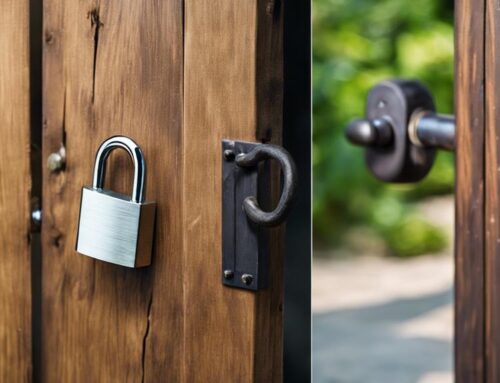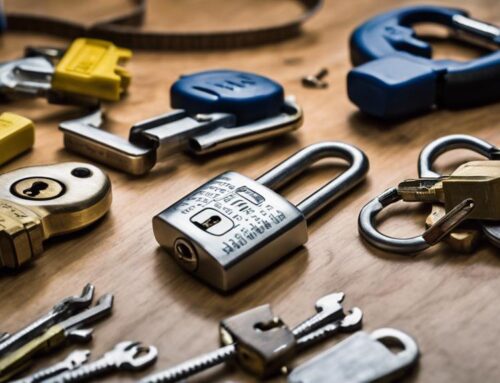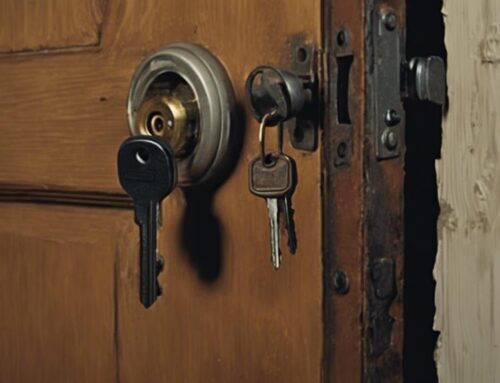To excel in professional lock re-keying, you need a few essential tools. Start with a key gauge for measuring pin sizes accurately and a pin kit for replacing pins in lock cylinders. A tension wrench is vital for applying pressure and aligning the pins correctly. Don't forget a plug spinner for quick resets, a key extractor for removing broken keys, and a versatile screwdriver set. A quality lock pick set can enhance your skills too. Proper lubricants will keep locks functioning smoothly. Mastering these tools will greatly boost your efficiency and professionalism in the field. You'll discover more tips to refine your skills.
Key Takeaways
- A key gauge is essential for determining correct pin sizes, enhancing efficiency, and avoiding costly mistakes in the re-keying process.
- A well-organized pin kit allows for easy changes of internal lock pins, enabling the creation of new keys without the need for full lock replacement.
- The tension wrench applies necessary pressure to the lock cylinder, critical for aligning pins correctly during re-keying.
- A plug spinner is useful for quickly resetting a lock's internal mechanism, saving time during troubleshooting tasks.
- A key extractor efficiently removes broken keys from locks without causing damage, ensuring continued service for clients.
Key Gauge
Key gauges are often fundamental for anyone involved in lock re-keying. They help you determine the correct pin sizes needed for each lock, ensuring you provide high-quality service to your clients. Using a key gauge simplifies the rekeying process, allowing you to work efficiently and effectively with professional rekeying tools.
Additionally, having a precise understanding of key dimensions can help you avoid costly mistakes that could impact your reputation as a locksmith. This knowledge is essential for ensuring a seamless rekeying experience for both you and your clients, making essential tools for DIY and pro locksmiths even more valuable.
As you explore locksmith rekeying equipment, you'll find that key gauges come in various designs. Some feature graduated markings for precise measurements, while others may include built-in charts for quick reference. This versatility makes them among the essential tools for rekeying that every locksmith should own.
When you use a key gauge, you not only enhance your skills but also improve customer satisfaction. Clients appreciate fast, accurate work, and a key gauge helps you deliver just that.
Pin Kit
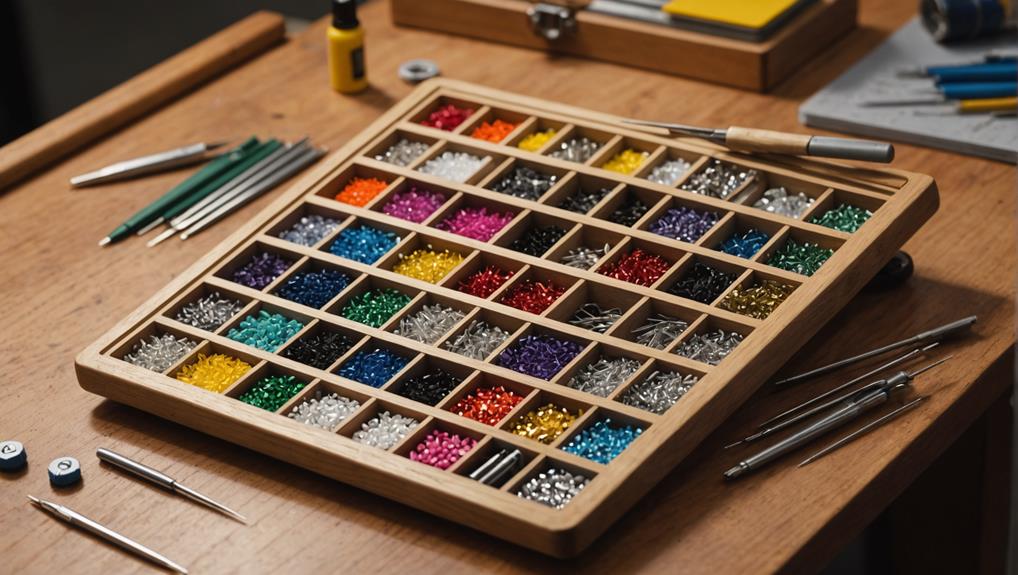
Alongside a key gauge, a pin kit is another must-have for anyone involved in lock re-keying. This essential tool allows you to change the internal pins of a lock cylinder, enabling you to create a new key for an existing lock. Understanding how lock re-keying works can further enhance your effectiveness in this field.
With a professional lock rekeying kit, you can efficiently serve your clients by ensuring their locks are secure and tailored to their needs.
A typical pin kit contains various sizes of pins, which are vital for matching the specific lock you're working on. You'll often find kits that include both driver pins and spring pins, giving you the flexibility to address different types of locks.
By using the right pins, you can easily reconfigure the lock without replacing the entire unit, saving both time and money for your clients.
As you gain experience, you'll appreciate how these tools used by locksmiths streamline the re-keying process. Remember, having a well-organized pin kit not only enhances your efficiency but also boosts your professionalism.
Investing in quality tools will help you provide exceptional service, ensuring every lock you work on is as secure as possible.
Tension Wrench
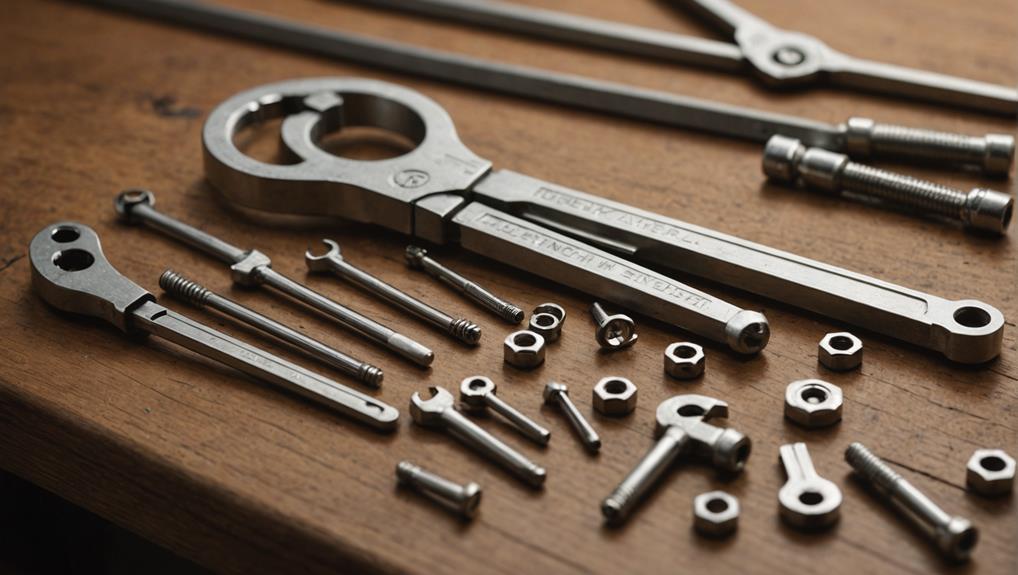
A tension wrench is an essential tool for successfully re-keying locks, as it applies the necessary pressure to the lock cylinder.
Understanding the internal mechanics of a lock, such as the role of pins and tumblers, can enhance your re-keying skills, especially when using a tension wrench effectively.
You'll find various types of tension wrenches, each suited for different lock styles.
Knowing how to use one properly can make a significant difference in your re-keying process.
Purpose of Tension Wrench
When re-keying a lock, the tension wrench plays an essential role in the process.
It's the tool that applies the necessary torque to the lock cylinder, allowing the pins to align correctly. Without it, you'd struggle to manipulate the lock effectively, making your task much more challenging.
As you insert the tension wrench into the bottom of the keyway, you'll want to apply gentle pressure in the direction the lock turns.
This pressure holds the pins in place once they're set to the shear line, enabling you to use a pick to adjust the pins to their new positions.
It's a delicate balance; too much pressure can bind the pins, while too little won't allow them to stay in place.
Types of Tension Wrenches
Typically, tension wrenches come in various shapes and sizes, each designed for specific types of locks and re-keying tasks. Understanding these differences is essential for efficiently serving your clients and ensuring their security needs are met.
| Type of Tension Wrench | Description |
|---|---|
| Flat Wrench | Best for standard pin tumbler locks. |
| Hook Wrench | Ideal for tight spaces and precision. |
| Z-Wrench | Offers versatility for various locks. |
| Diamond Wrench | Great for high-security locks. |
Each type serves a unique purpose, so you can choose the right one based on the lock you're working on. For instance, a flat wrench is perfect for standard applications, while a diamond wrench provides the strength needed for more advanced locking mechanisms. By selecting the appropriate tension wrench, you'll not only enhance your skills but also build trust with your clients. With the right tools, you'll be able to perform re-keying tasks efficiently, ensuring that you protect their homes and businesses effectively. Keep these types in mind, and you'll be well-equipped to tackle any lock re-keying challenge that comes your way.
Proper Usage Techniques
Understanding the different types of tension wrenches is just the beginning; knowing how to use them properly is equally important.
As you approach the lock, insert the tension wrench into the lower part of the keyway. Apply gentle pressure in the direction you'd turn the key. This tension is essential; it keeps the pins in place while you manipulate them with your pick.
While maintaining this pressure, take your pick and insert it above the tension wrench. Feel for the pins, and as you lift each one, listen for the slight click that indicates it's set.
If you release the tension too much, the pins may drop back down, making your task more difficult.
Plug Spinner
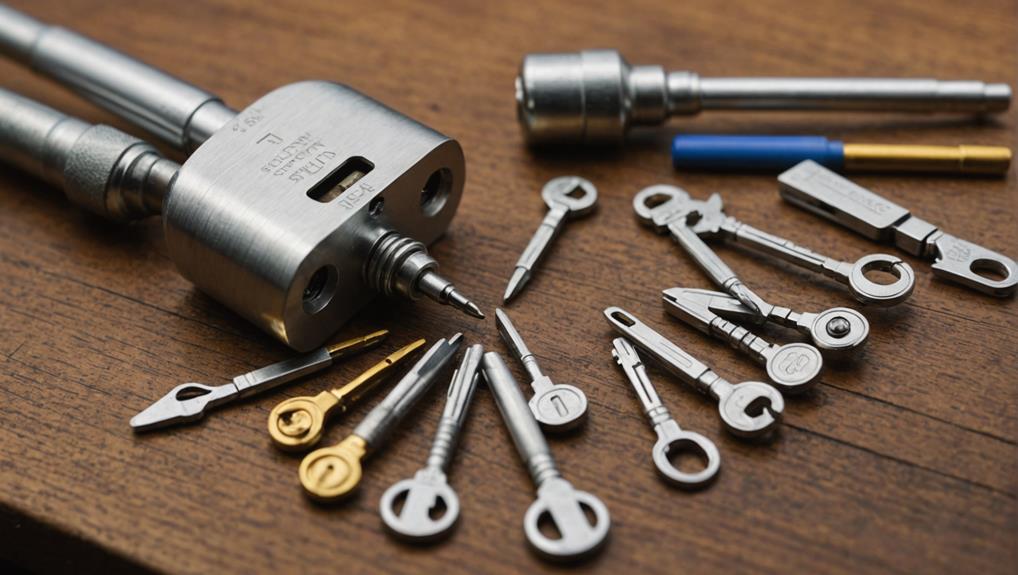
A plug spinner can really come in handy during the lock re-keying process. This essential tool allows you to quickly reset a lock's internal mechanism without needing to remove the entire cylinder, which is particularly beneficial when you're troubleshooting a stuck or misaligned plug.
When you're working to serve your clients efficiently, a plug spinner can save you precious time and effort, especially in situations where you encounter a locked cylinder that's been turned the wrong way. For more tips on overcoming common challenges, check out common challenges and solutions.
Using a plug spinner is straightforward. First, insert it into the lock where the key would typically go. With a simple twist and a flick, you can rotate the plug back to its original position, enabling you to re-key the lock seamlessly.
It's especially useful when dealing with pin tumbler locks, allowing you to reposition the plug without hassle.
As you utilize the plug spinner, remember that practice makes perfect. The more comfortable you become with this tool, the more proficient you'll be in your re-keying tasks.
Key Extractor
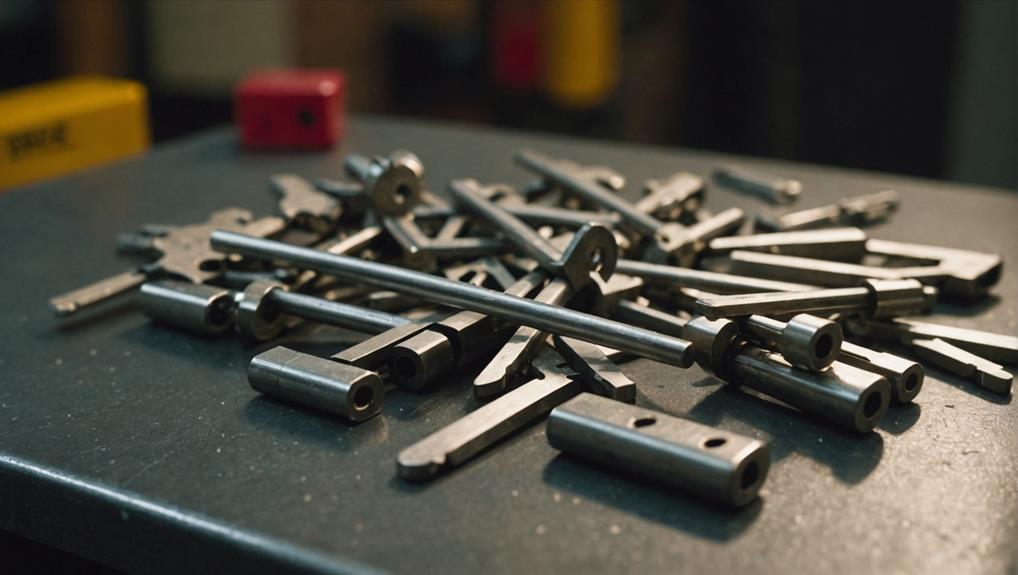
When you encounter a broken key lodged inside a lock, a key extractor becomes an indispensable tool in your lock re-keying kit. This handy device allows you to efficiently remove the remnants of the key without damaging the lock itself, ensuring you can continue to serve your clients effectively.
Understanding the benefits and challenges of DIY re-keying can also enhance your approach, helping you navigate situations where a key extractor is necessary.
Using a key extractor is straightforward. You'll insert the extractor into the lock alongside the broken key fragment, then gently twist and pull to extract it. This precision helps you avoid additional complications that can arise from a damaged lock.
In your role, it's crucial to act swiftly and efficiently, so having a reliable key extractor on hand can make all the difference. Look for models that are sturdy yet flexible, as they can navigate various lock styles with ease.
Investing in a quality key extractor not only enhances your toolkit but also boosts your reputation as a professional who prioritizes client satisfaction. By resolving issues like a stuck key quickly, you show your commitment to serving others, making their lives easier in times of frustration.
Always remember—being prepared with the right tools is essential for success in lock re-keying!
Screwdriver Set
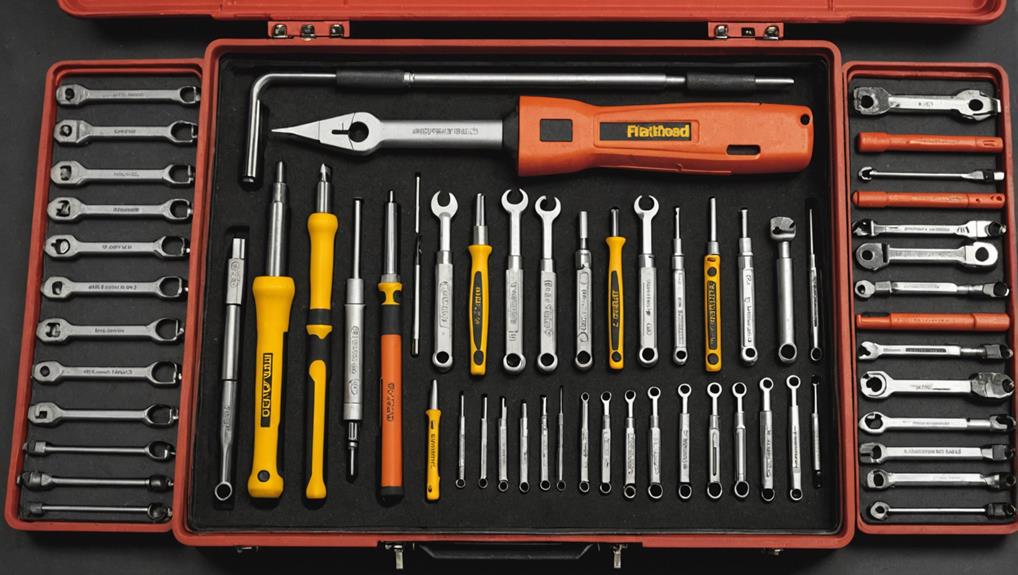
When you're re-keying locks, having the right screwdriver set is vital for the task.
You'll need various types of screwdrivers to handle different screws, including Phillips and flathead options, as well as precision screwdrivers for smaller screws found in some lock mechanisms.
Knowing how to use them properly can make your job easier, especially when considering the importance of purchasing reliable tools.
Let's explore the essential screwdrivers you should have and the techniques to use them effectively.
Types of Screwdrivers Needed
Having the right tools makes all the difference in lock re-keying, and a quality screwdriver set is essential. When you're re-keying locks, you'll find that different types of screwdrivers cater to various screws you'll encounter.
Here's a quick overview of the types you should have on hand:
- Flathead Screwdrivers: Perfect for slotted screws, these are versatile and can be used in tight spaces.
- Phillips Screwdrivers: With a cross-shaped tip, these provide better grip on screws and prevent slipping, making your job easier.
- Torx Screwdrivers: Often used in high-security locks, these star-shaped drivers offer a secure fit and help you avoid stripping the screws.
Having these screwdrivers in your toolkit not only streamlines your re-keying process but also guarantees that you're prepared for any lock type you might face.
Proper Usage Techniques
Understanding how to use your screwdriver set effectively is just as important as having the right types on hand. When you're re-keying locks, precision is key, and the right technique can make all the difference in your service to others.
Start by selecting the appropriate screwdriver for the task at hand—flathead or Phillips, depending on the screw type.
Make certain your grip is firm, but not overly tight, to maintain control without stripping the screw. When inserting the screwdriver, align it directly with the screw to avoid slipping. Turn it slowly and steadily; rushing can lead to mistakes that might frustrate your clients.
Always use the correct size screwdriver; a mismatched tool can damage both the screw and the lock. If you encounter resistance, don't force it—check for any obstructions or verify you're using the right tool.
Lastly, keep your screwdriver set clean and well-maintained. A well-cared-for tool not only serves you better but also reflects your dedication to quality service.
Lock Pick Set
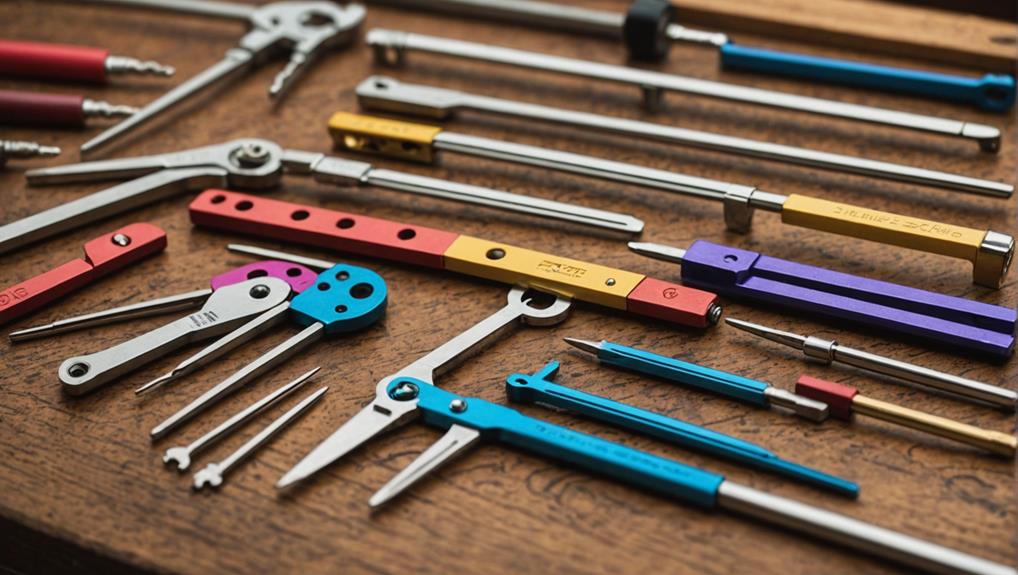
A lock pick set is essential for anyone looking to re-key locks efficiently and effectively. With the right tools in hand, you can help others by providing a secure environment for their property.
However, it's important to avoid common errors during the re-keying process, such as failing to understand the lock's mechanism, which can lead to complications later on avoiding common mistakes. A quality lock pick set typically includes various picks and tension wrenches, allowing you to tackle a range of lock types and complexities.
When selecting a lock pick set, consider these key components:
- Hook Picks: Perfect for single pin picking, these tools help you manipulate individual pins inside the lock.
- Rake Picks: Great for quickly opening locks, these picks allow you to feel your way through multiple pins at once.
- Tension Wrenches: Essential for applying rotational pressure to the lock, they're vital for maintaining control while picking.
Equipped with a reliable lock pick set, you'll not only enhance your skills but also gain the confidence to assist clients in need.
This tool not only supports your professional growth but also helps you serve your community by ensuring that locks are re-keyed and secure. Investing in a good set is a step towards becoming a trusted resource in lock re-keying.
Lubricant
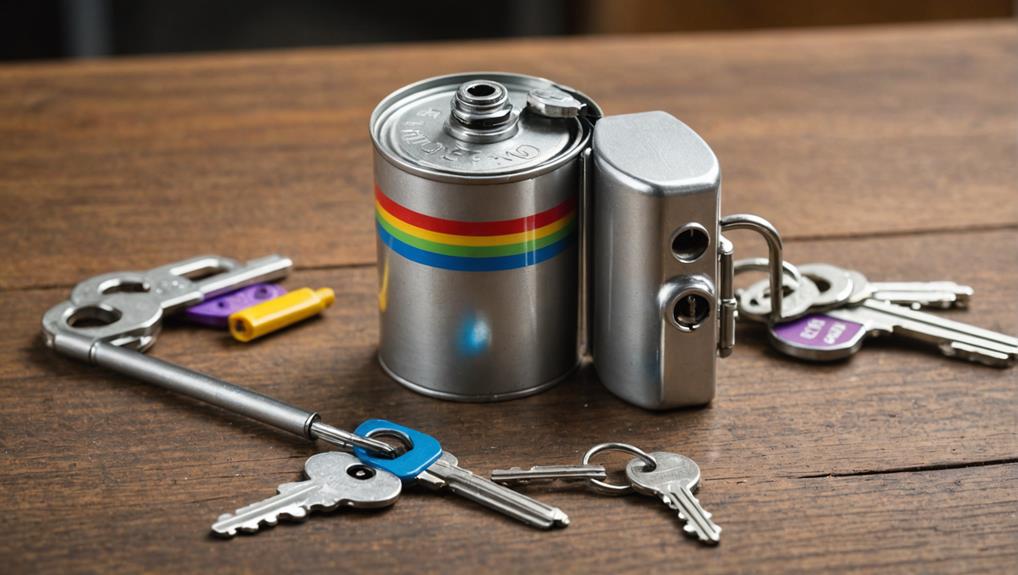
After you've selected the right lock pick set, the next important tool to contemplate is a quality lubricant. Using the right lubricant can make a significant difference in how smoothly your lock operates. It helps reduce friction, which not only improves functionality but also extends the life of the lock.
Proper lubrication guarantees that the lock pins and tumblers align correctly, enhancing overall security and performance, as discussed in the mechanics behind lock pins. When you're serving others, you want each re-keying job to be seamless and efficient.
Look for a lubricant designed specifically for locks, like graphite or a silicone-based option. Avoid using oil-based products, as they can attract dirt and grime, which might lead to more issues down the line.
When applying lubricant, a little goes a long way; you don't want to overdo it. Just a few drops in the keyhole and on moving parts will suffice.
After applying the lubricant, test the lock with your key to verify everything is operating smoothly. This small step enhances the overall experience for your clients, showcasing your professionalism and attention to detail.
Frequently Asked Questions
What Type of Locks Can Be Re-Keyed With These Tools?
You can re-key a variety of locks, including pin tumbler locks, which are common in residential and commercial settings.
Many standard door locks, deadbolts, and even some automotive locks can be re-keyed too.
It's important to check the lock type and verify it's compatible with your tools.
By knowing the right locks to re-key, you're better equipped to serve your clients and enhance their security effectively.
Always prioritize quality and safety!
How Often Should I Lubricate My Lock After Re-Keying?
Think of your lock as a well-tuned instrument; it needs care to perform beautifully.
After re-keying, you should lubricate your lock every six months to keep it functioning smoothly.
Just like a gardener nurtures their plants, you'll want to apply a graphite or silicone-based lubricant, ensuring the inner workings remain free from dirt and grime.
This simple act not only prolongs your lock's life but also serves those who rely on its security.
Can I Re-Key a Lock Without Professional Training?
You can re-key a lock without professional training, but it's not always easy.
If you're determined and willing to learn, you can find resources online that guide you through the process.
It's important to have the right tools and understand the mechanics of your specific lock.
Just remember, if you run into trouble, don't hesitate to ask a professional for help.
Your safety and security should always come first!
Are There Safety Precautions to Consider During Re-Keying?
When you're diving into re-keying, it's like stepping into a high-stakes heist movie—every move counts!
You've gotta think safety first. Always wear protective eyewear to shield your eyes from flying debris. Keep your workspace organized to avoid mishaps, and never rush the process; precision is key!
If you're dealing with a stubborn lock, don't force it—patience will save you from unnecessary injuries and headaches.
Stay sharp, and you'll handle it like a pro!
How Do I Know if My Lock Needs Re-Keying?
You'll know your lock needs re-keying if you've lost a key, moved into a new home, or experienced a recent break-in.
If you notice difficulty turning the key or feel it's too easy to open, those are also signs.
Trust your instincts—if you're worried about security, re-keying's a smart move.
Keeping your space safe for yourself and others is a priority, so act promptly when you suspect a lock issue.
Conclusion
In conclusion, having the right tools for professional lock re-keying is vital for efficiency and success. Did you know that nearly 30% of homeowners in the U.S. have never rekeyed their locks after moving in? By equipping yourself with essential tools like a pin kit and tension wrench, you can guarantee security and peace of mind for your clients. Investing in these tools not only enhances your skills but also builds trust in your services.

